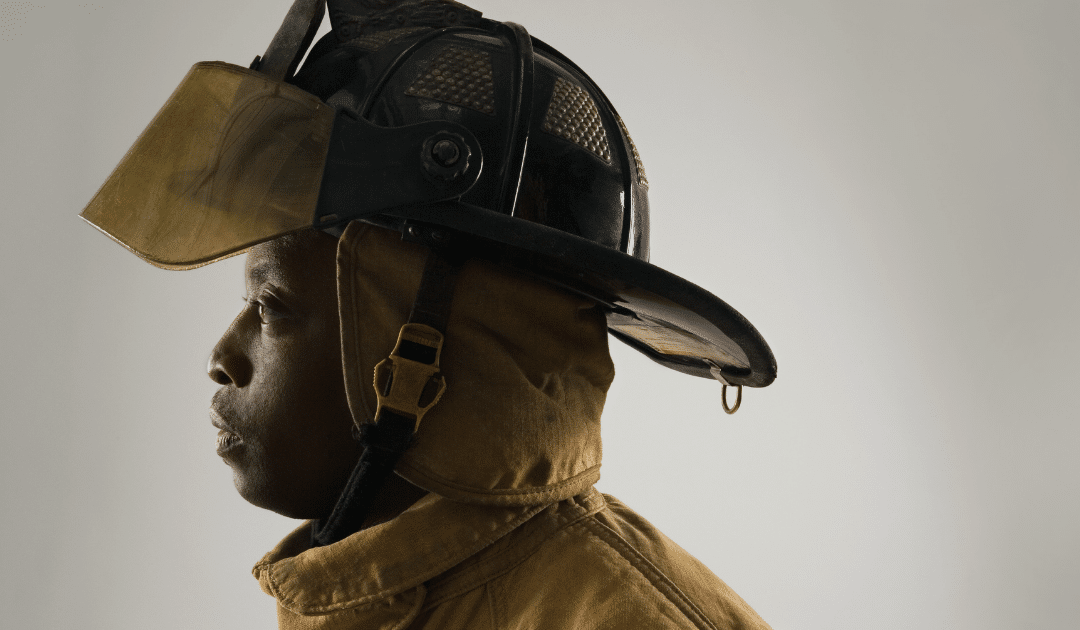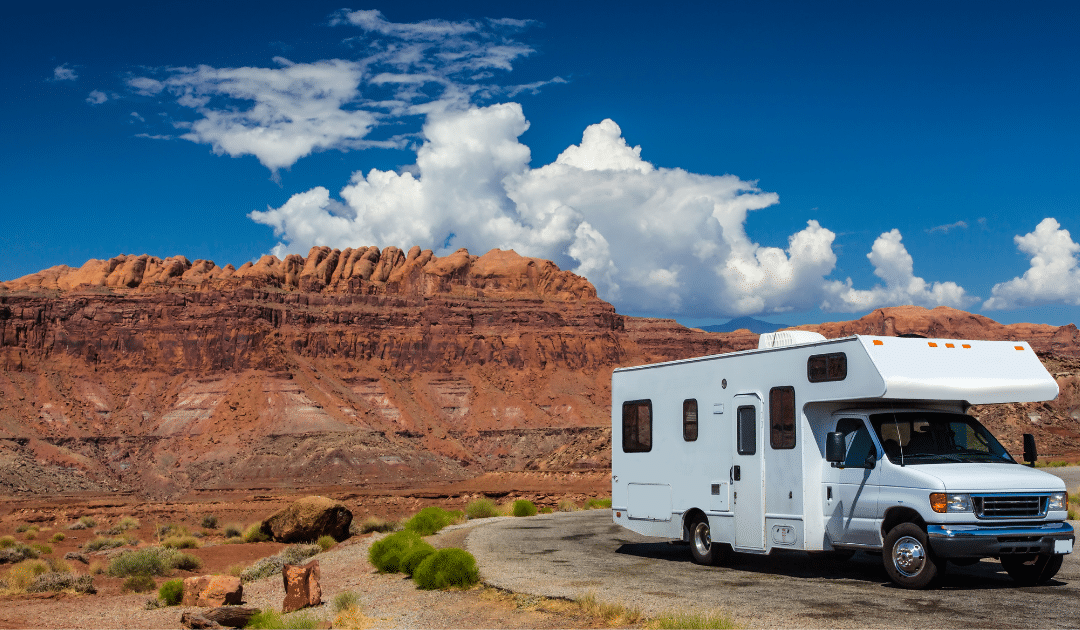
by California Casualty | Firefighters |
“I’m thought of as a unicorn because of who I am: Black, male, and therapist,” said Blaise Harris, a licensed clinical mental health counselor and a member of the North Carolina First Responder Peer Support.
Recent data from the American Psychological Association confirms what most of us already know: Very few Black male therapists in the United States. Even fewer, though, are providers who also specialize in counseling for special responders or worked as firefighters. We had the pleasure of sitting down and speaking to Mr. Harris about his time working as a first responder and the mental health struggles he has seen firsthand.
Amid the COVID-19 pandemic and seemingly endless onslaught of challenges from 2020 to date, it’s no surprise that Americans reported feeling more anxious and depressed. To make matters worse, among first responders, firefighters reported the highest instances of depression, according to a 2018 report by the Substance Abuse and Mental Health Services Administration. “It wouldn’t be a surprise if those numbers were higher today, especially during the pandemic,” Harris said.
Harris is personally aware of the struggles and stressors that come with working as a firefighter and the fact that first responders are at a much greater risk to develop post-traumatic stress disorder than the general public. After working as a firefighter for almost 15 years, Harris knew he wanted to become a therapist to help himself and others through the power of therapeutic relationships.
How to stop counseling stigma from spreading
One of the biggest barriers to firefighters’ mental health is the fear of the stigma associated with it and the thought they may seem weak or even lose their jobs. Therapy (in general) is often stigmatized, and most firehouses in the U.S. don’t have the resources to staff a behavioral health provider. That’s why his organization exists – to pair struggling first responders with peer counselors who understand what they are going through and help prevent first responder suicide.
According to experts like Harris, a first step forward is to be transparent and be vulnerable about your mental health challenges.
“The biggest thing for me is showing people that I am vulnerable about my issues. I’m very upfront about the things that I have been through and that I am not always the happy-go-lucky person that you get to see,” said Harris. “I know that once I start sharing my story with people, they start to see that it’s OK for you to talk about your feelings and what you’re facing.”
Harris said he grew up hearing disparaging comments in the Black community about mental illness in general, like “You can’t go to therapy because you’re weak or if you go to therapy there’s something wrong with you.” He said he sees lots of overlap between the extra stigma of seeking therapy as a Black man and the counseling stigma among first responders, especially firefighters.
Start with being kind to your mind
While firefighters are trained to keep nerves of steel while on duty, it doesn’t negate the unique challenges that exist outside of the job.
Harris said he’s seen many firefighters excel at compartmentalizing other challenges like deaths, divorces, and illnesses and instead replace them with fire service work. While this strategy may feel like the perfect solution at the time, it isn’t healthy long-term.
“Being at the station was what kept me going and when I got off work, that’s when everything starts to take a toll, so I always ask firefighters are you getting off work to rest? Take a break? Take care of yourself?” he said. And when you don’t take enough time to rest and recover from these stressors, they can balloon into mental health problems. But even if they do, it’s absolutely nothing you should be embarrassed or feel guilty about.
Mental health is just as important as your physical health, and you owe it to yourself, and those around you, to maintain it.
Breaking the cultural barrier with empathy
Ending the stigma of mental health counseling in the fire service industry will require a shift in the culture. It’s not enough to start or even simply continue the conversation about breaking these mental health barriers. Action needs to take place. The myth of the mentally invulnerable first responder is harmful and unrealistic.
As the International Association of Fire Fighters acknowledged in a report, there’s plenty of work to be done to improve mental health awareness and when to seek treatment. According to Harris, the more we are getting the word out about first responder mental health awareness- the more we will see positive change. Even now, compared to years prior, there seems to more understanding and acceptance of mental illness and stress management among firefighters than he’s seen before.
“I think we’re starting to see that more people are taking the time to realize that hey, it’s OK not to be OK,” said Harris. The more we talk about these issues, the more we can normalize them. Let’s end the stigma, for first responders and around the world.
Sponsored by California Casualty
Written By Police1 BrandFocus Staff

by California Casualty | Auto Insurance Info, Safety |
It’s never a bad time for a road trip!
If you are like the millions of American’s who are hitting the road this season to travel in a Recreational Vehicle (RV), follow these 3 key steps to keep you safe.
1. Before You Hit the Road in Your RV:
- Check the exterior for cracks and missing or damaged seals
- Inspect and test the battery
- Examine and pressurize the tires
- Replace filters and replenish brake, coolant, transmission, hydraulic and washer fluids
- Clean, inspect and refill LP gas lines and appliances
- Test carbon monoxide and smoke detectors
- Flush and fill the water system looking for leaks, clarity, and drinkability
- Check batteries and that all appliances are working
- Inspect sewer hoses and waste tank valves for cracks or sticking
When you are far from home it is also vital that you have the right equipment on hand that can get you out of any situation.
2. What To Pack in Your RV:
- Proper extension cord with the correct amps
- Surge protector for variable campground electrical systems
- Drinking water approved hose
- Matches or a lighter
- Portable chargers
- Food, water, and essential groceries
- Pressure regulator and water filter for variable campsite water pressures and contaminates
- A set of tools
- Extra clothing and blankets
- Laser temperature tester to detect overheated brakes, tires, and axles
- Emergency first aid kit
The last step in making sure you are all prepared before you travel is making sure you have RV Insurance.
3. The Proper Coverage for Your RV
California Casualty has been providing RV Insurance for over 40 years. Our RV Insurance program is designed to accommodate almost all recreational vehicles from pop-ups to coaches. We cover motor homes up to $120,000 in value and our partner market covers up to $500,000 in value.
Coverages Include:
- Total Loss Replacement
- Emergency Vacation Expense
- Disappearing Deductibles
- Full Timer’s Package
- Replacement Cost Personal Effects
- 24-Hour Roadside Assistance
- Windshield Coverage
- Free Pet Injury
If you would like to add RV coverage to your policy call our Sales Department at 1-844-854-7265. For more information on RV Insurance Coverage, please contact our Customer Service Department at 1-800-704-8614 or visit www.calcas.com.
This article is furnished by California Casualty, providing auto and home insurance to educators, law enforcement officers, firefighters, and nurses. Get a quote at 1.866.704.8614 or www.calcas.com.

by California Casualty | Auto Insurance Info |
As more cyclists (of all ages) take to the road to enjoy the nice weather, now is a great time to brush up on the rules for safely sharing the streets.
Think of bikes as cars, but with fewer safety features. Road hazards such as potholes and debris may cause a cyclist to suddenly swerve, much like if they were driving a vehicle. And although riding on the right side of the lane is preferred for bike traffic, there may be the occasion when cyclists take to the center if road conditions require it.
Understanding cyclists and anticipating their next move will help you safely share the road. Here are some quick safety reminders on driving with cyclists this summer.
1. They have the right to “drive” in your lane, but they also need their space. Always give cyclists the right of way. Be sure to watch your speed compared to theirs. Pass only when there’s ample room (at least 3 feet between you and their bike) and while other vehicles are not approaching.
2. Look for bicyclists everywhere. Cyclists may not be riding where they should be or may be hard to see—especially in poorly lit conditions, including dusk/dawn/night and even in inclement weather.
3. Avoid turning in front of a bicyclist who is traveling on the road or sidewalk, often at an intersection or driveway. An oncoming cyclist may be traveling faster than you think. Drivers turning right on red should look to the right and behind to avoid hitting a bicyclist approaching from the right rear. Stop completely and look left-right-left and behind before turning right on red.
4. Completely stop at red lights or stop signs to let bikers pass or check for unseen bikers. Make eye contact with cyclists at intersections or crosswalks to acknowledge their presence and signal to let them know they are free to pass.
5. Don’t honk at someone on a bike. The noise could startle them, making them lose control of the bike they are riding. If it’s absolutely necessary, do so from a distance and make it a light tap.
6. Take extra precautions if you are sharing the road with children riding their bikes. They are smaller and harder to spot on the road, especially for drivers of bigger cars. Plus, these young bicyclists won’t have the same control over their bikes or know the rules of the road as mature riders.
7. Knowledge of common biking hand signals is a must. These include sticking the left arm straight out to indicate a left turn, holding the left arm up at a 90-degree angle to indicate a right turn, and pointing the left arm down at a 90-degree angle to indicate a stop or slowing down.
Taking extra precautions when you are behind the wheel and understanding a cyclist’s next move can help you avoid an accident. Use these tips this summer to help you both navigate the road ahead safely and seamlessly.
This article is furnished by California Casualty, providing auto and home insurance to educators, law enforcement officers, firefighters, and nurses. Get a quote at 1.866.704.8614 or www.calcas.com.

by California Casualty | Good to Know, Homeowners Insurance Info |
An attractive nuisance is anything on your property that is attractive to children, but in turn, could also put them in danger.
Examples of common backyard attractive nuisances include:
-
- Pools
- Hot tubs
- Trampolines
- Swingsets
- Firepits
- Fountains
- Treehouses
- Playgrounds
While these nuisances all serve as great ways for children to get outdoors and enjoy the summer sun, without the proper precautions, they can become problematic. In fact, attractive nuisances cause so many injuries when kids are out of school that summer is also known as “trauma season” among public health officials in the U.S. This is because unintentional deaths and serious injuries increase dramatically among children in the summertime.
Not only will these objects of entertainment put your own child at risk for serious or fatal injury, if one of their friends comes over to play one day and gets hurt on an attractive nuisance in your yard, you will be held liable for their injuries.
How to Minimize Your Risk
An attractive nuisance isn’t just limited to objects of entertainment like pools; they can also be anything that is on your property that draws curiosity like construction, weapons, grills, landscaping, lawn equipment, ponds, old cars, or appliances, etc.
This doesn’t mean that you will have to go and give all of your nuisances away, instead take the proper precautions to prevent the nuisances from causing harm.
Minimize the risk of an accident or injury by understanding what you have on your property that could be considered an attractive nuisance and take the necessary steps to safeguard against any future accidents.
-
- Keep your property clean. Pick up dangerous debris and clean up after projects that you have completed. If you have old items that you are using anymore, sell or get rid of them.
- Make dangerous items inaccessible. Keep dangerous weapons locked away in a safe, equipment, and vehicles in a garage or shed, and put a cover on pools, fire pits, grills, and hot tubs.
- Install a gate and lock system. If there is no way to make items in your yard inaccessible try installing a fence or locked gate with a no trespassing sign to help keep curious children out.
- Always supervise. If you have an attractive nuisance in your yard, never let your children or their friends play outside without adult supervision.
- Have adequate coverage. Make sure you have enough liability coverage with your homeowner’s insurance. Talk to your insurance agent and review your policy.
If you fail to minimize the risk of injury and a child in your neighborhood harms themselves (or worse) on your property, you may be subject to legal action. Read your local laws and use good judgment, if you feel like you have an item of concern in your backyard, use the steps above to help prevent an accident.
How an Attractive Nuisance Affects Your Insurance
Insurance agents look at your property to determine your home insurance rate. Certain features of your home or property could impact your rate because of their degree of danger. For instance, if you have an in-ground pool in your backyard you will likely have a higher rate because a pool increases the risk of danger.
When you speak to your home insurance agent you will need to disclose if you have any attractive nuisances on your property to protect you from getting future claims rejected, if an accident were to happen on your property.
Many people assume that their homeowner’s insurance will provide them the protection they need if someone gets injured at their home, but this isn’t always true. If you have an attractive nuisance, protect yourself and your family, talk to your insurance agent and ask about increasing your liability protection or about adding a personal umbrella policy to your homeowner’s insurance.
This article is furnished by California Casualty, providing auto and home insurance to educators, law enforcement officers, firefighters, and nurses. Get a quote at 1.866.704.8614 or www.calcas.com.
by California Casualty | News |
We have amazing employees at California Casualty. The New Employee Spotlight is a series aiming to highlight the talented individuals that are brand new to our team. Please help us give them a warm welcome!
Today we’re spotlighting New Customer Service Specialist, Joel Parra.
Let’s get to know Joel!

What California Casualty office do you work in?
Arizona
What is one interesting fact you want us to know about you?
I’m an open book!
If you could eat one food for the rest of your life, what would it be?
Mexican Food
What do you like to do on the weekends?
Going out with friends
Playing Xbox
Bring Outside
What made you want to start your new career with California Casualty?
I have always had an interest in starting a career in the insurance industry, and really like how they help our hometown heroes!
If you want to learn more about Joel or are interested in a career at California Casualty, connect with him on LinkedIn! Or visit our careers page at https://www.calcas.com/careers





